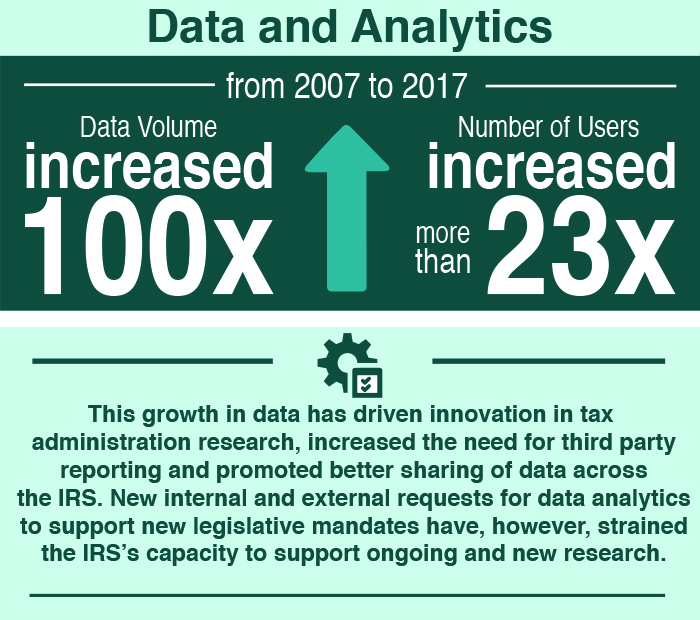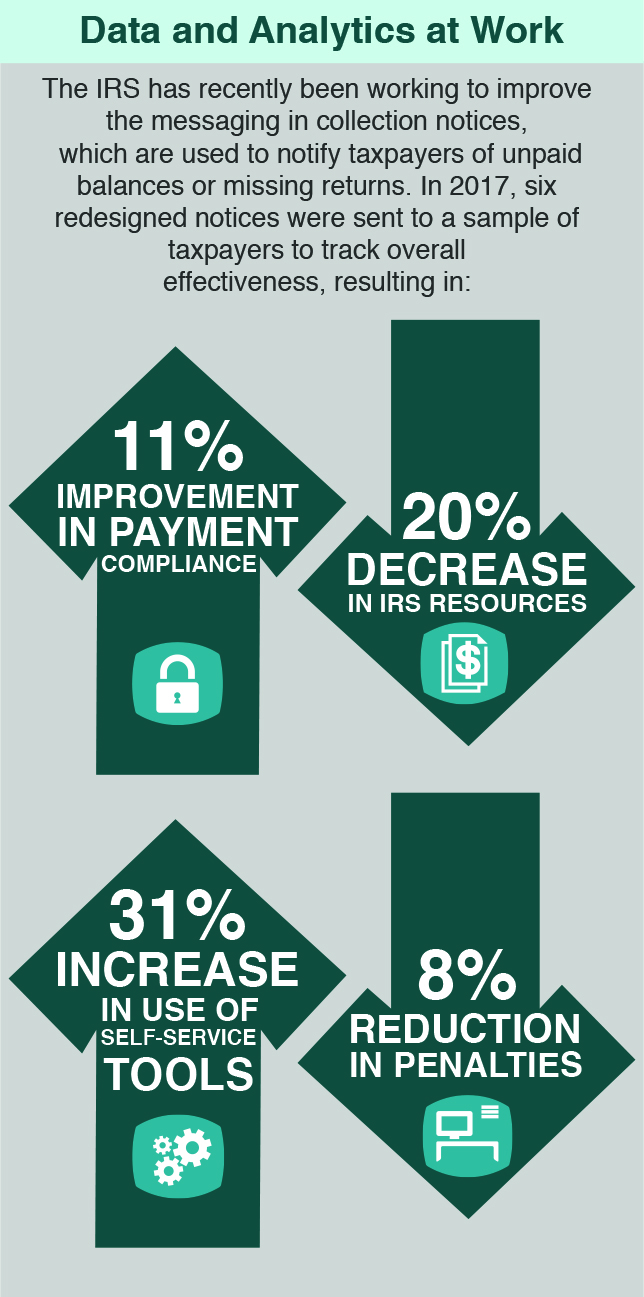Oracle Data Management Solutions for Analytics
Advance Data Access, Usability and Analytics to Inform Decision-Making and Improve Operational Outcomes |
We'll continue to use data to drive decisions and make the most effective use of our resources. Advancements across the full data lifecycle—from collection to storage to access to analysis—will allow us to better deploy data and implement insights. Improving data and analytics provides a repeatable process for selecting and assigning work.
As we strive to operate more efficiently, provide superior service to taxpayers and their representatives and ensure successful implementation of changes in tax laws, we're embracing and integrating data into our culture. Using analytics, we can continuously improve all facets of our operations — taxpayer service, enforcement efforts and a range of internal operations— maximizing our learning from tests and data. We're committed to using this research to guide our organizational priorities.
Advancements in how data is collected, stored, accessed and analyzed will allow us to deploy data better. We'll standardize our data processes and protocols and encourage collaboration among all IRS business units. Increased interoperability of data systems and sources will enhance the secure and seamless flow of data to enable greater authorized access to information. We'll invest in training to develop more advanced analytics skillsets across the IRS, and use data to improve our business processes.

Objectives and Supporting Activities
Update data collection and retrieval capabilities and processes to provide faster authorized access to information.
-
Define and communicate data access processes, clarifying where and how authorized users can retrieve and use data.
-
Standardize data management to provide integrated, usable data.
-
Identify an operating model and appropriate roles to manage, collect and be accountable for the accuracy of data across the agency.
Improve analytical tools and data competencies across the IRS.
- Invest in analytics and visualization software and tools, and develop processes to support analytics in IRS operations.
- Develop additional analytics trainings.
- Create communities of learning and interest related to data analytics.
Emphasize the use of data analytics, in conjunction with qualitative information, to select high-priority work.
- Design simple, repeatable processes for generating required insights and automating wherever possible.
- Increase collaboration among Information Technology, Research, Applied Analytics, and Statistics and other business units to bring a multi-disciplinary approach to data analytics.

Measuring Success
Progress Toward Data Strategy – Meeting key milestones related to the creation of a data strategy, including:
- Establishment of a governance council, comprised of stakeholders across the agency, that provides an enterprise-wide mechanism for monitoring data management and developing principles and practices for effective data governance and
- Establishing and updating a comprehensive catalog of data sources.
Trends and Challenges
Keeping Pace with Rapid Technological Change
IRS must take full advantage of technology to improve decision-making. New technologies continue to change the way organizations in the private and public sectors deliver their mission, products and services. Government executives believe digital technologies are critical to improving financial services, such as revenue collection, audits, cash management and claims management. The IRS must respond to other changes (e.g., process robotics, blockchain and artificial intelligence) and integrate technologies that enable more efficient mission delivery. For instance, the IRS has applied data and analytics to refine identity theft detection models, filters and business rule sets designed to detect refund fraud and noncompliance. By continuously monitoring their performance, the IRS has ensured a cycle of improvement in detecting and preventing identity theft.
Back to Top
Oracle Data Management Solutions for Analytics
Source: https://www.irs.gov/about-irs/strategic-goals/advance-data-analytics